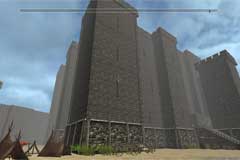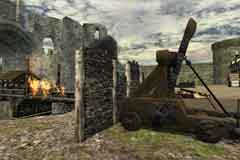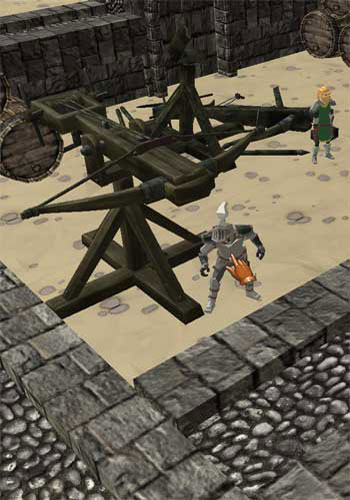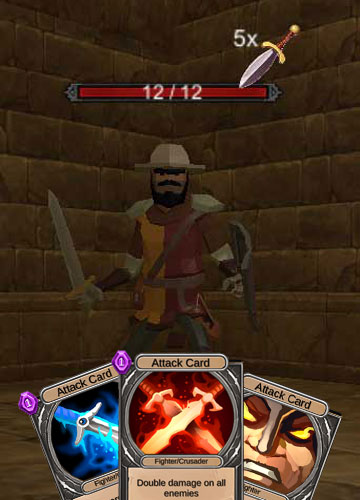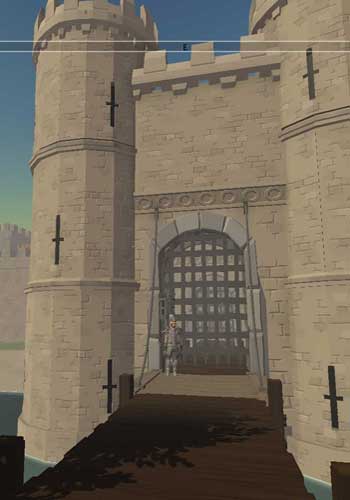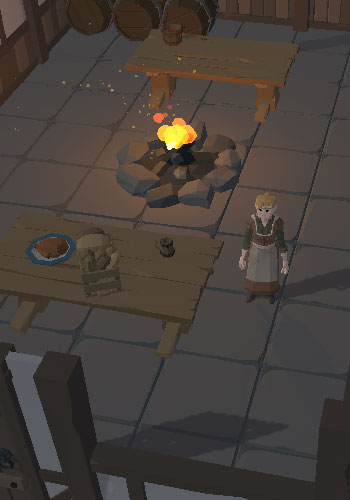Edward III - The Hundred Years War
TweetEdward III and his claim to the French throne
 fter the three sons of King Philip IV of France died without producing an heir, King Edward III of England believed he had a claim to the French throne. This was because he was the son of Philip's daughter Isabella of France. But under French law (Salic Law) a female was not allowed to inherit the throne ruling out Edward's claim. Instead, the French chose Philip of Valois, a nephew of the King Philip. In 1328 Philip of Valois became King Philip VI of France. It would be nine years later, in 1337, when Edward renewed his claim to the French throne.
fter the three sons of King Philip IV of France died without producing an heir, King Edward III of England believed he had a claim to the French throne. This was because he was the son of Philip's daughter Isabella of France. But under French law (Salic Law) a female was not allowed to inherit the throne ruling out Edward's claim. Instead, the French chose Philip of Valois, a nephew of the King Philip. In 1328 Philip of Valois became King Philip VI of France. It would be nine years later, in 1337, when Edward renewed his claim to the French throne.
The term Hundred Years War is misleadnig as although the conflict covered the period from 1337 to 1453 the actual periods of fighting were short and spaced out. Armies were expensive to maintain.
This simplified family tree hopefully illustrates the line of succession.
See the timeline below or this graphical version for more detailed information.
1337
1338
1339
1340
1341
1342
1343
1346
1347
1350
1356
1358
1359
1360
1362
1364
1367
1369
1372
1377
Event Participants and Locations
- Edward (III, King of England 1327-1377)
- Philippe (VI, King of France 1328-1350)
- Philippa (of Hainault)
- Edward (The Black Prince)
- John (II, King of France 1350-1364)
- Charles (V, King of France 1364 - 1380)
- Joan (of Kent)
- John (of Gaunt, Duke of Lancaster)
- Richard (II, King of England 1377-1399)
- Yevele, Henry
- Henry (IV, King of England 1399-1413)
- Hastings Castle
- Chateau de Caen
- St. Albans Cathedral
- Reims Cathedral
- Windsor Castle
- Westminster Abbey
- Plymouth
- Normandy
- Dover
- Boulogne
- Parliament
- Calais
- London
Selection of references used:
- 1: John J. Robinson, Born in Blood, ISBN:0-87131-602-1, M. Evans & Company / New York, Geoff Bath
- 2: Hubert Cole, The Black Prince, 1976, ISBN:0-246-10778-2, Granada Publishing Limited (1976), Own copy
- 3: Duc de Castries, The lives of the Kings and Queens of France, ISBN:0-297-77676-2, Erdington Library
- 4: T. Francis Bumpus, The Cathedrals of England and Wales, 1934
- 5: Edouard Perroy, The Hundred Years War
- 6: Michael Senior, The Life and Times of Richard II, 1981, George Weidenfeld (1981), Erdington Library
Related Information
Kingdom Banner

Edward changed the design of his shield to incorporate the lilies or fleur-de-lis of the French flag. Quarterly France and England
Medieval Episodes
Early Middle Ages
High Middle Ages
- Edward the Confessor and Godwine
- Reasons for the Norman Invasion
- The Norman Invasion
- The Norman Conquest
- Background to the Crusades
- People's and First Crusade
- Second Crusade
- Third Crusade
- Stephen's succession to the throne
- Civil War (The Anarchy)
- The Conquest of Ireland
- Henry II and Thomas Becket
- Excommunication of King John
- The First Barons' War
- The Second Barons' War
- Edward I and Wales
- Edward I and Scotland
Last Middle Ages
- Edward II and Piers Gaveston
- Robert the Bruce
- Isabella, She-Wolf of France and death of Edward II
- Edward III starts the Hundred Years War
- Continues with Richard II
- Henry V invades France
- Henry VI and Joan of Arc
- The Black Death
- The Peasants Revolt
- The Lords Appellant
- Glendower's Revolt
- Wars of the Roses
Early Modern Period
Event Participants and Locations
- Edward (III, King of England 1327-1377)
- Philippe (VI, King of France 1328-1350)
- Philippa (of Hainault)
- Edward (The Black Prince)
- John (II, King of France 1350-1364)
- Charles (V, King of France 1364 - 1380)
- Joan (of Kent)
- John (of Gaunt, Duke of Lancaster)
- Richard (II, King of England 1377-1399)
- Yevele, Henry
- Henry (IV, King of England 1399-1413)
- Hastings Castle
- Chateau de Caen
- St. Albans Cathedral
- Reims Cathedral
- Windsor Castle
- Westminster Abbey
- Plymouth
- Normandy
- Dover
- Boulogne
- Parliament
- Calais
- London

